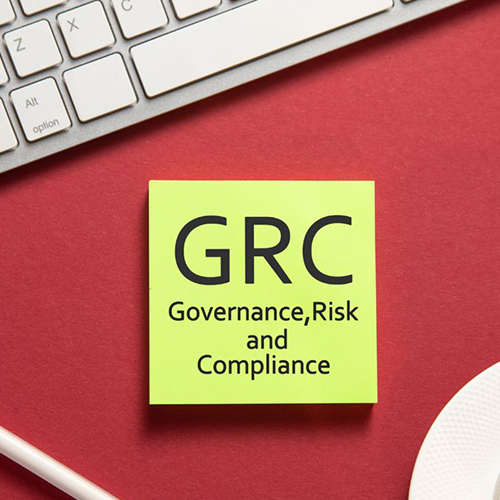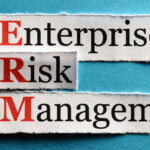This blog explores the critical role of Governance, Risk, and Compliance (GRC) in banking, focusing on governance, risk management, and adherence to regulations. It underscores the importance of integrating AI and regular audits to enhance GRC effectiveness, mitigate risks, and ensure compliance. Implementing these practices is vital for protecting sensitive data and maintaining organizational integrity.
Governance, Risk, and Compliance (GRC) refers to organizations’ strategy for corporate governance, risk management, and compliance with government laws and industry regulations.
It helps banks and financial institutions manage/mitigate risks and ensure regulatory compliance while safeguarding sensitive data, their reputation and improving their bottom line.
In this blog, we will discuss the importance of GRC in the banking industry, the role of technology & training in GRC, and share some of the best industry practices for implementing effective GRC programs.
Governance, Risk, and Compliance (GRC) in Banking
GRC consists of three main components:
1. Governance
Governance refers to the set of rules, processes, and policies essential for the proper functioning of the bank or financial institution. It covers,
- Ethical management
- Resource management
- Accountability
- Management controls
Governance ensures that higher management can direct and influence activities at all levels of the bank or financial institution and ensures corporate activities are aligned with customers and organizations to support the business objectives.
In the banking and financial industry, GRC is an essential component for,
- Maintaining the stability and integrity of the financial system
- Protecting customers’ interests
- Complying with regulatory requirements
- Meeting the bank’s goals and objectives aligned with its values and mission
- Identifying and managing risks appropriately
- Prioritizing compliance with laws and regulations.
Good corporate governance also requires clear lines of authority and decision-making with transparency and accountability. It is critical for maintaining the trust of customers, shareholders, and regulators
2. Risk Management
Risk management refers to banks’ or financial institutions’ processes and procedures for identifying, assessing, and mitigating various risks that can prevent or hinder the institution from achieving its short-term or long-term objectives and lead to losses.
Banks and financial institutions face a range of internal and external risks, threatening the stability and profitability of the institution.
Internal risks include,
- Operational risks, such as system failures or fraud
- Credit risks, such as loan defaults
- Liquidity risks, such as access to the cash to meet funding obligations
External risks include,
- Market risks, such as changes in exchange or interest rates
- Reputational risks, such as negative publicity or loss of customer trust
For effective enterprise risk management in banking, Chief Risk Officers (CROs), Operational Risk Managers (ORMs), and other stakeholders need to have a comprehensive understanding of these risks to develop appropriate risk controls and mitigation strategies.
3. Compliance
Compliance refers to banks’ or financial institutions’ level of adherence to laws, industry standards, regulations, and best practices mandated by the relevant governing or regulatory bodies.
In banking, compliance is crucial for,
-
- Safeguarding the customers
- Prevent financial crimes
- Maintain the integrity of the financial system
Banks and financial institutions need to meet regulatory compliances, including,
- Bank Secrecy Act (BSA)
- Dodd-Frank Act
- USA PATRIOT Act & many more
Besides, compliance is an ongoing process that requires continuous monitoring and reporting. It also requires consistent development of policies and procedures that help the bank or the institution comply with the applicable laws and regulations.
Implementing and monitoring internal controls, as well as assigning specific roles, responsibilities, and accountability, are all part of effective compliance risk management (CRM) in banking. It maps risk management accountability, ensuring that the company complies with all applicable legal and industry requirements.
Benefits of GRC in the Banking Industry
GRC policies and best practices implementation is a complex task. However, if implemented properly, it can provide the following benefits to the institution,
- Helps identify and mitigate various risks, prevent losses, and save cost
- Improves the effectiveness of the leadership
- Improves corporate governance
- Increases risk visibility throughout the organization
- Meet ongoing industry and regulatory compliances
- Protects against lawsuits, fines or penalties, and internal audits
- Protects critical data and transactions
- Closes gaps in governance that could lead to fraud or financial crimes.
GRC can assist banks in demonstrating their commitment to ensuring fair and safe transactions and gaining consumers’ trust, which is crucial for banks to retain their business.
Best Practices for Effective Governance, Risk, and Compliance in Banking
An effective GRC requires a holistic approach that encompasses all aspects of the organization across all levels and creates an environment that empowers employees and efficiently coordinates behaviors and resources. Below are some best practices for effective GRC in banking:
- Considers all relevant risks and compliance requirements while developing a comprehensive GRC framework
- The GRC program/framework should align with the bank’s goals and objectives
- Provide awareness and training activities and educate the employees and management across all levels to understand the GRC value and requirements, including individual roles and responsibilities
- Use AI and ML technologies and digital solutions to support GRC activities, such as risk assessment, transaction monitoring, watchlist screening, compliance monitoring, and risk reporting
- Conduct regular internal audits to assess and identify areas for improvement and ensure robust GRC processes
- Actively involve the board of directors in GRC oversight and be prepared to justify GRC implementation with a business case approach
- Define clear lines of authority and decision-making
- Create a GRC committee to oversee GRC activities with cross-functional representation
- Formulate policies and procedures that comply with governing laws and industry regulations
An effective GRC implementation for banks can help banks secure sensitive customer and transaction data while minimizing compliance and governance risks.
GRC Implementation with Deep-Domain Expertise
Poor Governance, Risk, and Compliance (GRC) practices or implementation can have adverse consequences for banks and financial institutions, ranging from financial losses to reputational harm and legal ramifications.
While the banking industry continues to grow, GRC will remain essential for risk mitigation and compliance risk management.
Anaptyss with its exclusive Digital Knowledge Operations™(DKO™)-based enterprise risk management (ERM) approach provides deep domain expertise to banks and financial institutions for effective governance, risk mitigation, and meeting regulatory compliances.
Interested in more information on implementing effective GRC programs? Write to us: info@anaptyss.com.


















